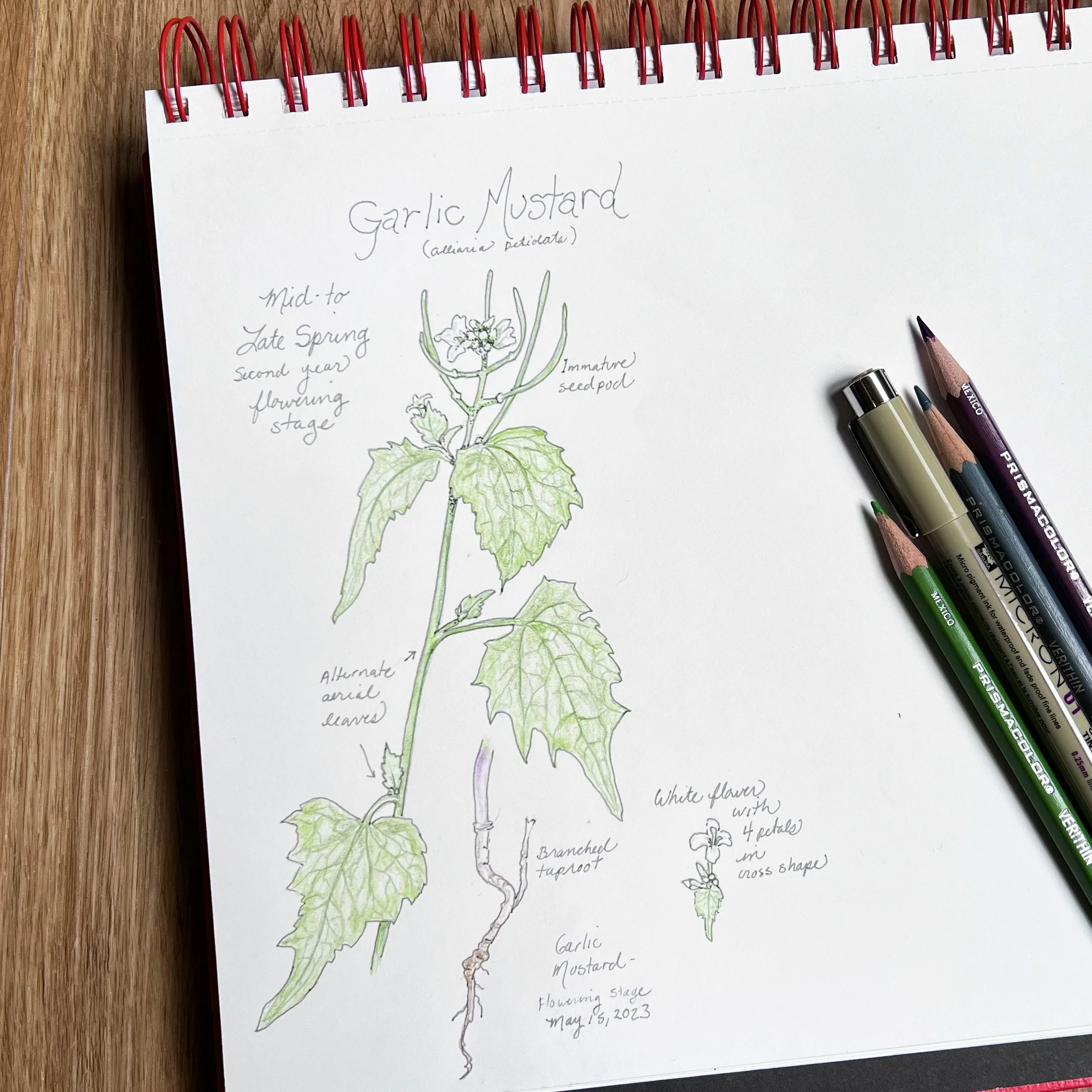Invasive but Edible Garlic Mustard
Now’s the time to share drawings of, talk about, pull, and eat Garlic Mustard.
What is garlic mustard (Alliaria petiolata)? It’s a wildflower native to Europe, western and central Asia, and parts of northern Africa. According to a 2014 article by Li Shen in The Burlington Free Press, Garlic Mustard was brought from Europe to Long Island, New York in 1868 as a remedy for gangrene and ulcers. Since then, it had spread slowly westward until the 1970’s. However, from the 70’s on, it has taken off at an alarming rate of 2500 square miles a year.
Biologists believe there’s a correlation with the population of white-tail deer, which also has multiplied since the 1970’s, and this rapid spread of garlic mustard. White-tail deer do not eat garlic mustard and prefer native wildflowers. Thus, garlic mustard has the opportunity to take over areas where other native plants are heavily grazed.
Insects do not care to eat garlic mustard, either. There’s a trace amount of cyanide in garlic mustard leaves, which repels insects. The amount of cyanide is harmless to humans. Garlic mustard is edible, the whole plant from flower to root. So if you can move on from the tiny cyanide content, give it a try!
The name explains the flavor. The leaves taste a little garlicky. The plant is in the mustard family, Brassicaceae. If you like pesto, you can substitute some or all of the basil leaves for garlic mustard leaves and the result is a tasty, garlicky, pesto.
I drew a garlic mustard plant in my botanical journal. Right now, you can find it blooming in wooded yards, nature trails, and parks. I’ve identified some of the characteristics of garlic mustard during this time of year, mid spring. The picture is about life size. The white flowers are in a tiny cluster. If you see it, pull it up by the root. It isn’t too difficult to pull if the soil is moist. If you pull it and don’t want to eat it - (no pressure if foraging isn’t your thing!) throw the plant in the garbage, don’t compost it. One garlic mustard plant has hundreds of tiny seeds that may survive and germinate in compost.
I hope this helps spread the word about this tasty but threatening invader of the US ecosystem.
Garlic mustard sketch - May 15.

